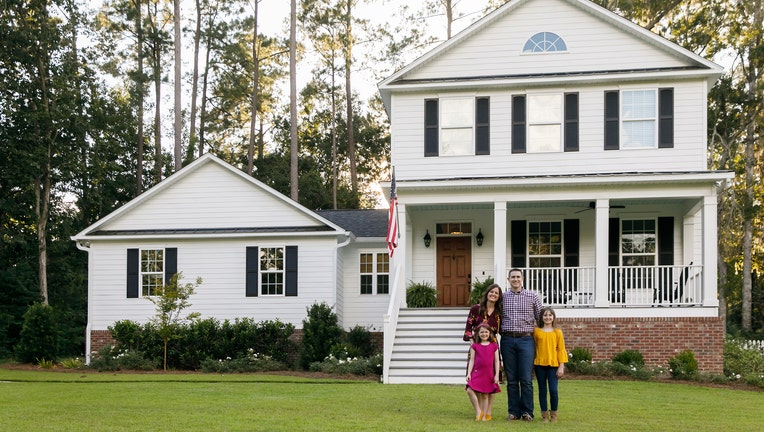How does Biden’s $10 billion Homeowner Assistance Fund help you?

If you’ve fallen behind on your mortgage payments, the Homeowner Assistance Fund could provide the relief you need. (iStock)
On March 11, President Biden signed the American Rescue Plan into law, the most recent COVID-19 relief bill. The bill includes provisions designed to help with payment assistance for homeowners who have fallen behind on their mortgage payments.
The bill allocates $9.9 billion toward the Homeowner Assistance Fund (HAF). This fund helps homeowners struggling with financial hardship due to the ongoing coronavirus pandemic. It includes provisions such as allowing financial assistance to homeowners who are struggling to make their monthly payments.
Alongside the assistance programs, these homeowners can also look into options such as reducing their monthly payments by refinancing their mortgage under today's historically low interest rates. You can explore your home refinance options by visiting Credible to compare rates and mortgage lenders.
ARE YOU STILL CONSIDERING A MORTGAGE REFINANCE? WHY YOU SHOULD ACT NOW
What is the HAF?
The HAF provides money to the states to instill payment assistance programs to help homeowners who were negatively affected by COVID-19. These funds will allow the states to set up programs to provide financial assistance to help homeowners with foreclosure prevention.
The Biden administration expanded on the model provided by the Hardest Hit Fund, a program that was set up in 2010. With HAF, states will apply for funding and the amount they receive will be based on the number of unemployed individuals in that state.
How can homeowners access money from HAF?
Anyone who began experiencing financial hardship after Jan. 21, 2020 is eligible to apply for HAF, according to the National Consumer Law Center. Homeowners can use these funds to pay for the following qualified expenses:
- Mortgage payments
- Housing costs due to forbearance
- Principal reduction
- Expenses like utilities, internet, HOA dues or insurance
States will request the funds and the Treasury Department must begin making payments within 45 days of when the law was enacted. From there, the states will decide when homeowners can begin applying for financial assistance.
However, it is still unclear exactly how homeowners will apply for HAF funds. It is likely that community organizations will assist homeowners in applying for payment assistance programs.
If you don’t have time to wait on the HAF fund, there are other options available. Mortgage refinancing is a good way to lower your monthly costs and save money over the life of the loan. You can visit Credibleto view loan options across multiple mortgage lenders.
HOW TO LOWER YOUR MORTGAGE PAYMENTS DURING COVID-19
How to get mortgage relief now
If you need financial assistance right now, the first step is to find out the type of mortgage you have. Once you have this information, here are some ways you can access relief beyond what the assistance programs provide:
- Refinancing: Rates for a 30-year mortgage are currently 3.04%, and rates for a 15-year mortgage are 2.35%. So if you need a way to lower your monthly payments, refinancing your mortgage loan could be a great way to save money on your mortgage. To find out more about your options, visit Credible to get prequalified rates without impacting your credit score.
- Foreclosures on hold: If you’ve been unable to make your monthly mortgage payments, your mortgage servicer cannot begin the foreclosure process thanks to the Consumer Financial Protection Bureau (CFPB), which halted foreclosures for all mortgage types including private and government-backed loans such as Fannie Mae or Freddie Mac, FHA loans, VA loans and USDA loan, until 2022. However, homeowners still need to be careful since those who don't apply for forbearance could still become delinquent on their home loans.
- Loan forbearance: If you’re unable to make your mortgage payments, you can contact your lender and request forbearance. Forbearance allows you to make reduced payments or even forego your monthly mortgage payments altogether. And the Biden administration extended the forbearance application window until June 30, 2021. Homeowners can request forbearance for COVID-related difficulties for up to one year, with the option to extend the forbearance period twice with three month extensions each time.
WHAT TO DO WHEN YOUR MORTGAGE FORBEARANCE ENDS
If your loan is owned by Fannie Mae or Freddie Mac or is any other government loan such as a VA loan, USDA loan or FHA loan, then you’re eligible for mortgage forbearance for up to 18 months if you apply before June 30, 2021. All of the penalties will be waived, and this information will not go on your credit report. Homeowners don’t have to provide any proof of their hardship.
Once the forbearance period comes to a close, mortgage servicers can't make homeowners pay a lump sum to make up for the missed payments, but can explore other options such as refinancing the loan, increasing future monthly payments to make up for the missed payments over time or adding the missed payments on to the end of the loan period.
If you’ve built up some equity in your home, another option is a cash-out refinance. This allows you to refinance your home at a lower interest rate, and pull out cash for the equity you have saved in your home. You can use these funds to pay necessary expenses or pay down high-interest credit card debt. If this option sounds appealing, your best bet is to visit an online marketplace like Credible to view your refinance rates.
Relief is available for struggling homeowners
It’s still unclear when borrowers will be able to access funds from the HAF. But if you’re struggling financially, mortgage help is available to you. If you’re interested in learning more about refinancing, visit Credible to speak to a mortgage expert and get your questions answered.
Have a finance-related question, but don't know who to ask? Email The Credible Money Expert at moneyexpert@credible.com and your question might be answered by Credible in our Money Expert column.

